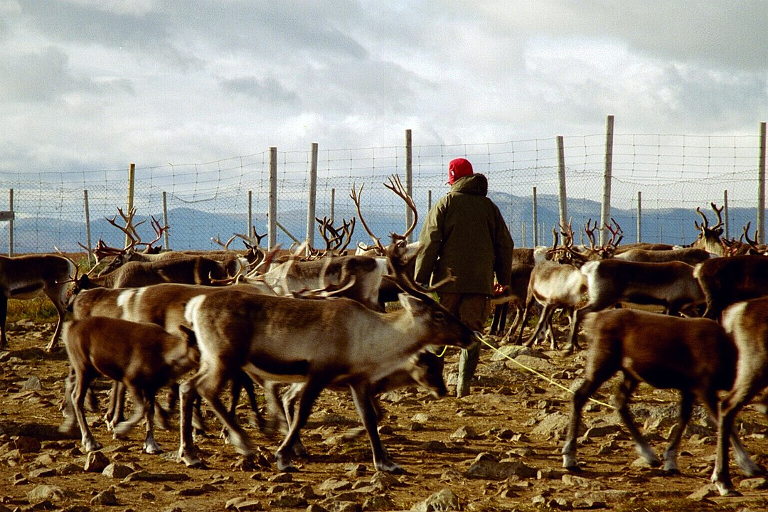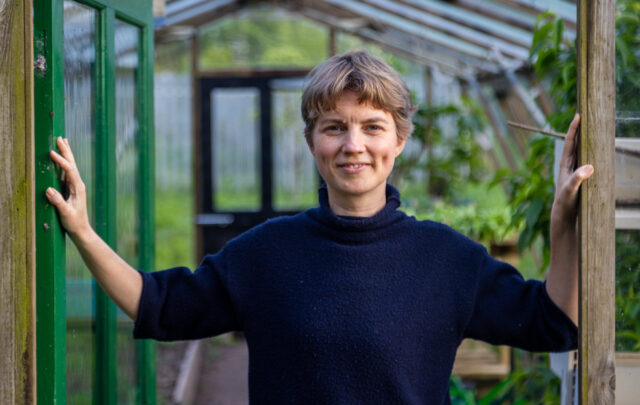Here is a story that we tell ourselves. From The Good Ancestor:
“Consider the immense legacy left by our ancestors: those who sowed the first seeds in Mesopotamia 10,000 years ago, who cleared the land, built the waterways and founded the cities where we now live, who made the scientific discoveries, won the political struggles and created the great works of art that have been passed down to us.”
We don’t question this narrative. We simply accept it as “the way things happened”. But read it again with your critical brain engaged. To begin with, this ancestral narrative begins in Mesopotamia. This is not accurate. A few people in the Mesopotamian river basins started writing down what they were doing (mostly with regard to how much grain and gold were passing through their hands), but our cultural story begins long before Mesopotamia and in many different parts of the world, and ultimately, the human story begins in Africa, not the Middle East.
Farming did not begin with sowing seeds. This is a classic chicken egg of an assertion. What seeds? Where did they come from? How did humans even know to put them in the ground and expect to harvest something humans could eat? We’ll come back to this because this is the focus of this essay.
Let’s consider the assertion that humans built waterways. Yes, there are some canals, some irrigation projects, a few long-distance pipes and aqueducts. These are not generally waterways in terms of transport, which is I believe what is being referenced. Humans have not, in any case, built most of the bodies of water we use. Waterways are part of this planet, a priori; humans have done more to break rivers, lakes and oceans than to build them. We have built very little of the solid infrastructure — like waterways — that our culture rests upon. We are not able to build these things even with fossil-fuel driven tools. The planet does this for us, and the planet does not generally allow for massive land alterations that She has not built. Time and geological processes will erase everything we do.
I’d almost give a pass to founding cities and making scientific discoveries. Except most cities are not very ancient; they are not the homes of most humans; and they will definitely shift with human settlement patterns going into the future. As to discoveries, our reflex is to think of Science springing into existence in Europe of the 17th century. Maybe with a few outliers in time and geography. But like sowing seeds that must have existed and were not naturally occurring, scientific discoveries began long before humans began writing down their accomplishments and in many different parts of the world. In fact, creating those seeds ranks high on the list of great scientific discoveries. Most of the foundations of our knowledge of the world were laid in deep time. The ways we build, the things we eat, our material culture, language — all these are far more important to our lives and took far more inventiveness and creativity and sheer dogged experimentation than anything done since the Enlightenment.
And then there’s the political struggles “our” ancestors won… Do I even have to say anything? There isn’t a lot of love for the ancestors who won political struggles because most of us come from the ones who lost. And there should not be political struggle; we should be working together not tearing each other apart. Similarly, which great works of art and who gets to deem them great?
As you can see, there are many fatal flaws in the accepted narrative. We need to stop telling ourselves this story. It is wrong. It ignores and debases our true ancestry. Most importantly, it is destructive and divisive.
We need new stories (like this one). We need to understand where we come from. We need to know how this world works and what our place is in it. We need to know how we work. We’re still surprisingly vague on a good many things. For today, let’s look at that chicken egg.
I’ve seen assertions that crops and livestock were domesticated very quickly, maybe within a a couple dozen generations. There are no domestics and then suddenly — BAM — at 10,000 years ago, domesticated food sources are everywhere in the archeological record. Moreover, very shortly after they appear in the archeological record, foods are being grown in volumes sufficient for trade, not merely for subsistence.
It’s hard to argue with this because this is what we do see. Or, more precisely, this is what we see in that portion of human material culture that is preservable, has survived in settings that indicate use, and has been found and properly interpreted. As you see, the record becomes a bit less set in stone (ha) when you consider all the variables going into it. The kind of things that are preservable in the record are stone and bone tools, teeth and bone from animals and humans, and a few of the toughest plant fibers. These have survived in middens, hearths and various caches. We don’t have much evidence from actual farmed fields or gardens until humans began record-keeping. And of course we haven’t even begun to look for evidence of early farming around most of the globe.
Consider how little information we actually have about the earliest farming. Most tools would not have been made of stone; they would have been wood. Wood is easier to shape and repair; it’s lighter and easier to transport; and most trees can provide useful branches to shape into tools whereas only a few rock types knap well. Wood tools were very likely dominant, and yet wood does not preserve well except in very dry conditions — which is about the only ecological niche where stone is favored because trees don’t grow in deserts. So the record is skewed from the outset.
Let’s use logic instead. First, consider our hominid ancestors. Were they farmers? Qualitatively, maybe.
Early hominid anatomy was modified relative to pre-hominids in several key ways that reflect new behaviors. Hominid skeletons show changes in the pelvis, legs and feet for bipedal locomotion; large grinding molars and premolars with reduced canines for effective chewing of fibrous plant foods; minimal sexual dimorphism because of selection for common behavioral adaptation for both females and males (that is they were changing to do the same things); and brain expansion and reorganization for their developing memory, conceptualization, problem solving, innovativeness and more sophisticated communication, as well as for increased hand skills. These changes were caused by and caused change in social relationships and tool use.
All the foregoing are related to gathering plant food on the savanna as the main selection pressure. Females were innovators in gathering. Because of nutritional requirements of pregnancy and nursing and overt demands from hungry children, women had more motivation for technological inventiveness, for creativity in dealing with the environment, for learning about plants, and for developing tools to increase productivity and save time. Selection was for increasingly efficient, time-saving, energy-saving ways of getting food. We still call necessity the “mother” of invention.
So it appears that our earliest hominid ancestors (mostly on our mother’s side) were already manipulating their food resources. I wouldn’t call this farming, though perhaps it is a form of gardening. But where do we draw a line between gardening the existing food plants and breeding — domesticating — new ones? What does domestication entail?
We know that changing plant or animal morphology takes two things — a genetic mutation that codes for a desirable trait and many generations of breeding stock to disperse that trait. The second part is tricky but manageable, especially in the annual plants that were our earliest domesticates. Still there’s a limit on experimentation, one generation per year. In a human lifespan of maybe 40 years, there’s only so much one can accomplish. And that’s if you’ve managed to find that one plant that has undergone favorable random mutation. This is perhaps the more difficult part of breeding — especially in a small (human-scale) geographical location. So this is the part of domestication that would have taken a very long time and considerable experimentation in many different localities around the world.
Domesticating animals would be even more time-consuming, probably the work of many human generations. Animals don’t produce many offspring in a breeding season; many animals do not breed at all in a given season (too old, too young, etc.); and there are several years between generations. The probability of finding a favorable mutation, even in the fast-breeding goats (the first domesticates), is much lower than in a square foot of grain. And once that minor miracle has occurred, it takes decades to breed a new population that consistently expresses the new favorable trait. This is the work of a lifetime! To make each adjustment! If you’ve been lucky enough to find that trait occurring in one of your goats.
Not only did our ancestors have to figure out how to grow and manipulate grain-bearing grasses, they also had to figure out how to process the seeds. Our ancestors had more powerful grinding teeth, but our digestive tract hasn’t changed much and it has a hard time extracting nutrition from seeds. That is, after all, the point of a seed — to make sure the germ inside stays intact until it finds the proper conditions to germinate and grow. Seed shells evolved interdependent with animals. The seeds that could pass unscathed through an animal’s digestive tract (and incidentally the ones that provided no nutrition to the animal) are the seeds that survived to reproduce.
Human digestion would have required some processing of the seeds before eating them. Which is itself a chicken-egg problem. If seeds don’t readily give up nutrition in their naturally occurring state, why would humans have tried eating them? How would they have known to try to process the seeds, and then how would they have known how to process the seeds? And how many times did this discovery happen only to die out with the discoverer? How many repetitions of these lucky chances combined with brilliant insights would it have taken before humans generally knew how to turn a grass seed into food?
While we are asking questions, consider this one: how long would it take to even realize that any of these things can be done? Domestication implies an active process, an actor with motive and agency, somebody doing things with intention. Even if that is not what archeologists mean precisely, domestication is something humans do, not something that just happens. What human first knew to try to mold a wild grass into grain? What would grain have meant to them before grain existed? What was the objective when the object was nonexistent?
I am not at all convinced that this began as a human, or even hominid, activity. I think it was more like co-evolution. Once humans figured out how to turn the seeds into digestible food, they probably nudged evolution along. Over thousands of years, humans chose the biggest grass seeds in their locality for food, dropping many seeds as they went, probably mostly near their hearths. Over time, wherever there were seed-eating humans, the grass seeds got bigger and changed in other ways that appealed to their human partners. After more time, it is likely they figured out that seeds make new plants that roughly match the plants the seeds came from. All this took many generations of observation and knowledge sharing. Eventually, they were so active in this process of co-evolution that they could be called farmers.
Now, here’s another place to use logic. Would humans have been able to forage in temperate climates year-round? Or would it not have been necessary for humans to have farming skills before they ventured into colder regions? Wouldn’t the humans who walked from Africa to Australia (boats notwithstanding) have needed some way to bring their own food with them? Is it likely that they would have been able to eat from the land during that whole journey through vastly different ecosystems where almost nothing would have been recognizable, let alone digestible? Or is it more likely that they carried seeds with them? Maybe even knew some herding techniques? This would push farming back to at least well before 50,000 years ago. “Well before” because farming had to exist before they left Africa.
All this long process fed into the domestication of food stuffs and to the invention of farming. There were thousands of years of experimentation — yes, science! — before humans even knew what they were doing and thousands more before they had succeeded in creating new species and sub-species of plants and animals. In fact, I suspect there were farmers — those actively engaged in growing food, not just foraging — before there were domesticated strains. Else why would domestication have happened if not because there were farmers?
I do not believe that farming began at about 10,000 years ago. Perhaps agriculture did, however. The distinction I’m making here is between growing food for eating — farming — and growing food for use in generating and maintaining wealth and power over others — agriculture. The main point is that farming existed. Domesticated plants and animals existed. Humans were actively manipulating their environment to control their food supplies long before what is commonly called the advent of agriculture.
No, farming did not begin at 10,000 years ago. However, civilization probably did spring into existence in several places around the globe at that time. Why? Because the climate finally became favorable for long-term human settlement. Ice core records tell us that the climate was wildly unstable up until this time. Every human project would have been interrupted, perhaps cataclysmically, within a few generations. And there were large parts of the globe that could support no human projects at all until the end of the Ice Ages. Humans had been engaged in human projects in the most benign regions for thousands of years before suddenly climate stabilized into the unvarying conditions we consider normal. (Ice cores show us this is not true!) And when this happened humans had the skills, the tool set, the breeding stock, and the knowledge already at hand. They started building more elaborate settlements and farming these places as soon as the climate allowed it.
And right on the heels of elaborate settlements, some humans in some regions began to form hierarchies that benefitted themselves — for which many supporting systems were needed, from record keeping to weaponry manufacture to, yes, agriculture. The easiest way to dominate others is to control the food supply. I believe that what we call the birth of agriculture is actually the birth of these domination systems that required food to be grown for state use, not for food. But the point is: farming existed. Extensively. Well before these states.
Farming gets a bad rap these days. Jared Diamond has called it the “worst mistake in the history of the human race”. Many agree with him. Superficially, I sort of agree with him. My garden experience tells me that soil does not like to be disturbed through annual tilling. Churning up the soil reduces its fertility, turns it into dirt, leads to desiccation and erosion. My instincts tell me that plants and animals will grow best if they are growing in the conditions in which they evolved. So tomatoes like long, hot summers with moderate to high rainfall but not damp conditions — because that’s what the natal region for tomatoes, Central America, is like. Tomatoes do not want to grow in the unnatural conditions of a garden, even if I work really hard to mimic their homelands.
But worst mistake is a strong phrase (considering all and sundry…). And I think it’s imprecise. It’s worth looking at the essay that is titled with this assertion.
Diamond’s essay does show that the common narrative of progress from “hunter-gatherers” to moderns is false. Things do not get linearly better through time. Indeed, there is clear correlation between the adoption of sedentary life-ways and a decrease in most of the measures of good health that can be recorded in the archeological record. In fact, Diamond claims there is some evidence that modern populations still haven’t “recovered” from those times.
For example, skeletons from Greece and Turkey show that the average height of foragers toward the end of the Ice Age was around 5′ 9” for men and 5′ 5” for women. By 3000BCE height had dropped to only 5′ 3” for men and 5′ for women. By classical times heights were very slowly on the rise again, but modern Greeks and Turks have still not regained the average height of their distant ancestors. Of course, modern Greeks and Turks are not descended solely from those Ice Age populations, and height is not an equally adaptive trait in all environments… so this is a somewhat spurious claim. But it does show that foragers were not living the “nasty, brutish and short” existence the modern narrative assigns to them.
Diamond places the blame for this decline in health squarely on the adoption of agriculture. But there are problems with this. On the face of it, yes, there is a correlation between a society adopting agriculture and a reduction in health. But almost without fail there are other factors driving both the change in food acquisition strategies and the decreased well-being. The key factor is that there is almost always an elite group presiding over a state apparatus of control. Notably, the archeological remains of elites do not show evidence of declining health. Skeletons from Greek tombs at Mycenae were two or three inches taller and had better teeth than commoners. Among Chilean remains, the elite were distinguished not only by costly grave goods but also by a fourfold lower rate of bone lesions caused by disease.
Diamond then presents this personal anecdote to support his claim that contemporary agrarian societies are also unhealthy.
“Women in agricultural societies were sometimes made beasts of burden. In New Guinea farming communities today I often see women staggering under loads of vegetables and firewood while the men walk empty-handed. Once while on a field trip there studying birds, I offered to pay some villagers to carry supplies from an airstrip to my mountain camp. The heaviest item was a 110-pound bag of rice, which I lashed to a pole and assigned to a team of four men to shoulder together. When I eventually caught up with the villagers, the men were carrying light loads, while one small woman weighing less than the bag of rice was bent under it, supporting its weight by a cord across her temples.”
I might counter that this does not implicate farming; it’s the culture of male dominance that is overloading these women. (And it’s not “sometimes made beasts of burden”; it’s always.) I think what Diamond’s own essay shows is that elites have been manipulating food production for their exclusive benefit for a long time. It’s not farming. It’s not even sedentary life-styles. It’s men. Farming is not the worst mistake. Farming is not even a mistake. It’s how we secure our food supply in variable climates. No, the mistake is allowing elites control over farming, over that food supply.
Look at the evidence from what is now called “alternative agriculture”. These are farming practices that are not focused on growing a few commodity crops for trade, which is what we think of as conventional agriculture, even though conventional agriculture is not particularly conventional. Agriculture oscillates through periods when farmers are intent on producing one or two major cash crops and when there is no distinct order. These periods can be associated with societal breakdown and with climate breakdown (often interrelated). But all told, those periods that most resemble what we normalize as conventional farming have been short and sporadic. These conventional agricultures always break down after a few centuries; some last no more than a generation. Furthermore, even on farms with a profit motive, there are numerous breaks with conventional agriculture. Farmers turn to new crops, new methods, new tools. Variation seems to be more common than convention. This tells me that convention doesn’t work. If it did, farmers wouldn’t be changing their routines so frequently.
The narrative of conventional agriculture seems to be more dominant than the practice of conventional agriculture. A survey of book titles, educational programs, and marketing campaigns reveals almost nothing of alternatives — neither contemporary nor in history. To learn of these alternatives takes research effort. That all these disparate ideas of farming are called “alternative”, in opposition to “conventional” practices when those conventional practices are the outliers, is revealing. Scratch this story and you uncover elite objectives. This is true throughout history. Conventional agriculture is not very good at raising food for community subsistence nor for generating profits for farmers. But it is a highly effective way to both filter wealth upwards and to maintain state control though controlling the food supply.
Which brings us back to stories. History is told by the victors. So our story of ourselves is not ours, but is crafted by and for the elites down through the ages. Did civilization spring into being in Mesopotamia at 10,000 years ago? No. There were cities before there were hierarchies, and human culture existed long before there were cities. This is the story elites crafted to make it seem as though they had a hand in inventing and directing human civil society — and therefore had reason to lead, to be ranked above other humans who had less important roles in creating society, and most importantly to justify taking greater shares of wealth for themselves.
Is farming a mistake? No. But this is a more interesting false narrative. It is not old. It is very recent. Up until a generation or two ago, you would find no people of any background who would make this assertion — even though we’ve been farming for thousands of years and presumably if it was a bad thing it might have occurred to someone else before now to say so. No, this is the tale of modern elites. These are people who do not want to farm, who only reluctantly acknowledge that some form of farming is necessary. These elites are fiercely urban, screen-focused and generally disconnected from biology. Farming is a scapegoat in this narrative. All the wrongs of the modern world are not to be blamed on urbanites and their high levels of consumption but on farming. Look at the waste, they say, cow farts and all. Look at the filth! Look at all the space farming uses, space that could be returned to nature (what they mean by that is always unclear to me).
This story is a smokescreen, created because these urbanites all know on some level that how they live is unsustainable. They fear that they are going to have to do actual work, probably involved in growing food, in the not so distant future. They do not want to farm. So they are demonizing farming with all the hot air in their copious lungs.
But once again, farming is not the problem… it’s still elite men and their bad stories.
References
Diamond, Jared. 1 May 1999. “The Worst Mistake in the History of the Human Race”. Retrieved from Discover Magazine (https://www.discovermagazine.com/planet-earth/the-worst-mistake-in-the-history-of-the-human-race) on 10 March 2021 at 3pm EST.
Krznaric, Roman. The Good Ancestor: A Radical Prescription for Long-Term Thinking. 2020. The Experiment: New York City, NY.
Tanner, Nancy Makepeace. On Becoming Human. 1981. Cambridge University Press: Cambridge.
Thirsk, Joan. Alternative Agriculture: A History. 1997. Oxford University Press: Oxford.
©Elizabeth Anker 2021
Teaser photo credit: Reindeer herds form the basis of pastoral agriculture for several Arctic and Subarctic peoples. By Mats Andersson – Flickr, CC BY 2.0, https://commons.wikimedia.org/w/index.php?curid=2891541





